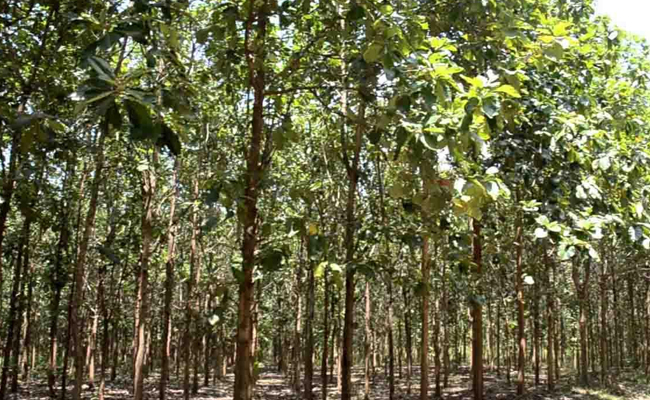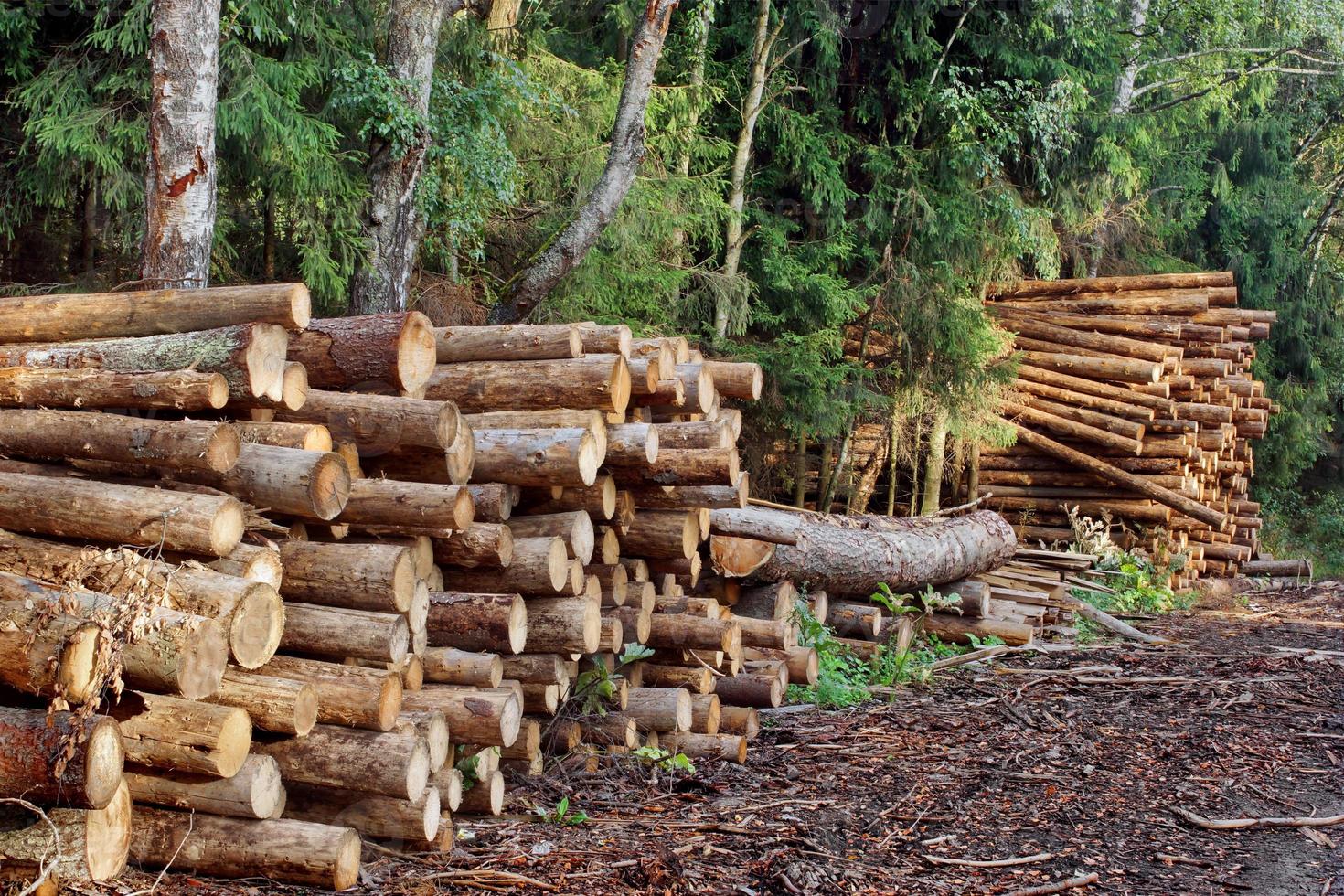ITC’s Deforestation, A Tobacco Empire That Has Unleashed Havoc, Dwindling India’s Forests And Fuelled India’s Ecological Crises
There are tales of ambition, innovation, and progress in corporate history. Then there's the story of ITC, a story that unfolds with a cloud of smoke, the sound of falling trees, and a hefty dose of irony. The British planted the seed of an idea over a century ago - to bring cigarettes to India's masses. Thus, the Imperial Tobacco Company was born. Over time, ownership shifted, and the name evolved into the more concise "ITC." Yet, despite the transformations, ITC remains undeniably a cigarette company at its core. As we look into ITC's empire, we can't ignore the shadows that loom over its dominion - the forests decimated, the air polluted, and the environment battered by the very industry it nourishes. This is a story that uncovers the paradox of ITC's success, where every puff is paired with a felled tree, and every profit is intertwined with a wounded ecosystem.

ITC The Monopolistic Giant At The Heart Of Deforestation
The British had a groundbreaking idea in a faraway land (well, not that far, it’s India). “Let’s sell cigarettes in India!” they proclaimed. And so, in a stroke of genius, the Imperial Tobacco Company was born. Over time ownership shifted hands, and the name transformed to ITC, but don’t be fooled – it’s still the kingpin of cigarettes.
But wait, there’s more! ITC owes its rise to a helping hand from the government.
The ban on tobacco advertising? Well, that was a godsend for ITC. Wills and Goldflake didn’t even need to lift a finger – their brand names did the talking.
And what about manufacturing licenses? Oh, don’t worry; ITC had those locked down too. You see, the government wasn’t handing them out like candy, and that just bolstered ITC’s supremacy.
But that’s not all; the government decided to play hero again by banning Foreign Direct Investment (FDI) in the tobacco industry in 2010. Poof! Say goodbye to foreign competition.
The end result? ITC emerged as an untouchable juggernaut, reigning over 80% of the legal cigarette market. It’s almost poetic that this cigarette crusade forms a staggering 75% of the company’s operating profit.
But wait, there’s a plot twist. Health-conscious folks are putting a dent in ITC’s soaring cigarette revenues. A novel concept, right? Nevertheless, fear not, for ITC has devised a masterstroke strategy. They raise prices; they shrink cigarette lengths – after all, who needs a full-length cigarette when addiction trumps everything? Consumption remains as inelastic as ever, and ITC gleefully enjoys its treasure trove of profits.
The government hasn’t messed too much with cigarette taxes, and the masses find ITC’s price hikes surprisingly tolerable. As a result, the battle between illicit and legal cigarettes rages on, and ITC rides the wave of optimism.
In a dazzling display of numbers, cigarette volumes surged by a miraculous 15% in the last quarter of 2022, sparking newfound hope.
Now that we have given a befitting introduction to this mega-giant, now comes the more important part

Let The Tree Die
Let’s take a moment to step into the heartlands of tobacco cultivation, like Mysore. Behold the grand spectacle of trees transformed into smoke. An astonishing 80% of farmers in these regions have embraced tobacco as their golden ticket.
Who cares about trees and future generations when tobacco yields instant riches?
Shades of tamarind, neem, and jackfruit have vanished, turned into fuel to cure tobacco.
Farmers laugh their way to the bank, trading trees for riches. But let’s peek behind the scenes – it takes a whopping 4.5 kg of fuel to cure one kilogram of tobacco, as admitted by the tobacco firms themselves.
Or maybe it’s actually seven to nine kgs? Who’s counting? With temperatures soaring to 170 degrees Celsius, wood disappears like magic, almost as fast as the cigarettes they fuel.
Imagine the carnage in the Mysore district – 57,364 barns devouring 4,58,912 tonnes of fuel each year. Trees fall like dominoes, releasing carbon into the air. Where’s all this fuel coming from, you ask?

The once lush forests of Nagarhole and Bandipur. Hunsur, Piriyapatna, and H D Kote taluks share borders with these once-sacred woodlands, now butchered by the tobacco industry’s insatiable hunger.
But wait, there’s more! You might think tobacco farmers are partial to coffee husks or organic material, but no, wood remains their true love. Every year, you can witness the spectacle of lorries laden with wood, a scene so familiar that it’s almost like a bizarre carnival. Forests across regions cry out in agony as tobacco curing season begins, a relentless march of destruction.
Every year, at the beginning of June, you can spot hundreds of lorries laden with wood at the entrance to Hunsur. A similar sight will also greet you in HD Kote and Piriyapatna taluks. Wood is transported even from Shimoga, Kolar, KR Pet, Madikeri, Chamarajanagar and Mysore.
Tobacco curing usually begins towards the end of July; this continues till the first week of September. You can spot many agents on the Mysore-Hunsur, Mysore-HD Kote roads, waiting to take into possession or claim ownership of any tree that falls along these roads and then supply wood to tobacco farmers. These agents also keep an eye on trees that fall on Mysore’s streets. Trees are constantly being felled to make space for new extensions that come up in Mysore every day.
And let’s not forget real estate developers – those heroes who embrace tree felling as a necessary evil. In their quest to create, they obliterate, and agents stand guard to provide wood for the insatiable tobacco industry’s needs.
Nothing Is Right Here!
Not only is tobacco cultivation eating into forest areas, but it is also making an impact on the water table of the region. Tobacco cultivation has meant that farmers don’t allow water logging in their fields.
Chemical fertilizers used on the crops are also robbing the soil of its fertility, turning land barren and of no use for other crops.
The water table dwindles, chemical fertilizers strip the land, and tobacco’s grip tightens. Future generations? Who cares?
Tobacco cultivation was started in Mysore in the Sixties. A survey on how much forest land has been lost to tobacco over the intervening decades would be interesting.

ITC’s Green Massacre
Picture this – a sprawling 668,400 hectares of Indian forests wiped out in just five years, earning India a dismal second place in the global race of deforestation.
A wake-up call is echoing across the world, signifying the dire need to reevaluate our environmental commitment and moral responsibilities.
Yet, amid this ecological distress, a question lingers like an ominous cloud – Why does the Indian Tobacco Company (ITC) have a carte blanche to fell 14 crore trees annually mercilessly?
The time has come to confront the true cost of rapid industrialization on India’s delicate ecosystem. While industrialization propels the Indian economy to new heights, the collateral damage to our environment cannot be brushed aside.
Let’s face it – the scars inflicted upon our planet in the name of industry are far from virtuous. Amid this backdrop, ITC takes the spotlight, with cigarettes reigning as its chief moneymaker, amidst other offerings. The figures tell a story of their own – a net profit of a staggering Rs. 5,086.86 crore for the quarter ending March 31, a remarkable leap from the previous quarter’s Rs. 4,190.96 crore.
Let’s, not mince words – ITC’s revenue supremacy looms large, accounting for an awe-inspiring 75% of the business’s operating profit. In a financial ballet of epic proportions, the coffers overflowed with revenues touching a mind-boggling 623 billion Indian Rupees in the fiscal year 2022.

The Government And ITC Nexus
The undeniable thread weaving together deforestation and ITC Limited is a symphony of power, where the government cozies up to an impervious conglomerate that holds dominion across sectors.
As this juggernaut extends its influence over the private sector, the curtain must be drawn back to reveal the mechanics of this cigarette-crafting giant.
Beyond the alarming carcinogenic nature of cigarettes, the elephant in the room remains – companies like ITC are orchestrating a global tragedy through their unfettered deforestation practices.
A shocking revelation emerges – tobacco farming is accountable for a staggering 5% of the world’s total deforestation, casting a glaring spotlight on the forest casualties in India.
India’s Rapid Deforestation, At Whose Hands?
In a world grappling with environmental fragility, the unholy nexus between ITC and deforestation stands uncontestable.
Startling figures cast a gloomy shadow over India’s green cover – a UK-based firm reports a staggering loss of 668,400 hectares of forests in a mere five years, elevating the nation to the dubious honor of the world’s second-highest deforestation rate.
This dire situation serves as an urgent wake-up call, demanding a profound reevaluation of India’s environmental contributions and its moral obligations on the global stage.
Amidst this alarming scenario, a piercing question remains unanswered – why does the Indian Tobacco Company (ITC) continue to wield the axe on a mind-boggling 14 crore trees annually?
Peering into the labyrinth of ITC’s operations, a revealing truth surfaces – its financial lifeblood courses through cigarettes, among other products. The financial quarter culminating on March 31 witnessed a resounding victory for ITC, boasting a net profit of a jaw-dropping Rs. 5,086.86 crore, a leap from the previous quarter’s Rs. 4,190.96 crore.

It’s a symphony of revenues that resonates relentlessly – nearly 75% of the conglomerate’s operational profit is accounted for by ITC’s triumphant tobacco enterprise. Tallying the numbers, the financial year 2022 stands adorned with ITC’s revenues towering at a colossal figure of nearly 623 billion Indian Rupees.
Tree After Tree Axed
The symbiotic relationship between Deforestation and ITC Limited stands glaringly uncontested; lurking beneath the veneer of profits lies an unsettling reality. Cigarettes, with their carcinogenic mark, connect with companies like ITC to cast an alarming pall over the world, ushering suffocation with their audacious deforestation on a grand scale.
Intriguingly, the curtain rises to unveil an astonishing revelation – tobacco farming’s contribution to global Deforestation stands at an unsettling 5%. This statistic serves as a mere glimpse into the seismic upheaval that tobacco production has wrought upon India’s forests, echoing with the unsettling symphony of axes, timber, and the eerie silence of fallen giants.
ITC’s Role in India’s Forest Depletion
The insidious intertwining of the ITC industry with rampant deforestation unfolds a grim narrative, stressing the profound ecological repercussions of its operations. A stark reality surfaces – tobacco cultivation casts an unrelenting shadow over vast swathes of forests, its impact reverberating through a chain reaction of alarming consequences.
At the nucleus of this dire situation lies the insatiable demand for fertilizers and pesticides driven by tobacco farming. The byproduct is a desolate agricultural landscape, rendered unsuitable for future use.

A somber ritual follows – land set ablaze by tobacco cultivators to clear the way for perpetual tobacco plantations. This sinister cycle precipitates an unprecedented era of forest degradation, a precursor to the ominous symphony of deforestation.
Fueling this cycle is the voracious appetite for land, imperative for expanding tobacco production. Yet, this burgeoning demand for land comes at the cost of our precious forests as trees succumb to the ceaseless march of tobacco cultivation.
But the tale doesn’t end here; the process of tobacco curing introduces another troublesome chapter – A voracious appetite for burned wood emerges, as the act of curing tobacco leaves demands a scorching blaze, releasing a plume of pollutants into the very air and water we rely upon.
As the threads of this narrative intertwine, ITC’s role in this ecological drama becomes irrefutable. Amidst its paperboard, paper, and packaging ventures, a colossal revenue of 76 billion Indian rupees is harnessed.
However, this paper industry leaves an indelible mark on the ecosystem, guzzling enormous amounts of water and churning out waste in torrents. A distressing fact emerges – in comparison to a plastic bag, the energy consumption of paper production is doubled, creating an ecological imbalance that casts an ominous pall.
The Dire Ramifications Of This Deforestation
- Landslides, catastrophic and concerning, surge due to the loss of protective layers on slopes, causing rainwater to cascade recklessly and instigating perilous landslides.
- Soil erosion, an inescapable consequence, fractures the agricultural landscape, rendering it vulnerable to the relentless march of tobacco and paper industries like ITC.
- Floods, ever-increasing and devastating, have seized headlines with alarming frequency. A critical agent in this torrential menace is the unfettered felling of trees, which once stood resilient as guardians against inundation. As trees fall and their root systems perish, the land loses its capacity to absorb water, ushering in the specter of deluge.
- Infrastructural devastation follows in the wake of violent floods, a sobering reminder of the repercussions of unchecked land clearing. As the cycle perpetuates, the very foundations of human safety tremble under the weight of environmental damage.

ITC, But We Are ‘Carbon-Positive’
In a confounding paradox, ITC presents itself as a “carbon-positive” entity amidst these ecological affronts. This declaration rings hollow against the backdrop of their colossal annual tree cutting – a staggering 14 crores of trees.
The puzzling absence of documented backlash against this rampant deforestation raises questions about the company’s accountability. The government’s resolute oversight of an industry generating substantial excise duties, sales, and income taxes further underscores its complicity.
However, the narrative takes a baffling turn. As ITC unabashedly carves a narrative of sustainability achievements and green visions, even as its primary revenue sources – tobacco cultivation and the paper industry – are implicated in large-scale deforestation and severe pollution.
The climate crisis, ever-intensifying, commands the attention of all businesses. In this era of corporate climate commitments, “Net Zero” claims dominate the discourse. Yet, these claims stand as a colossal challenge, with the UN acknowledging the gravity of this endeavour.
Amidst this grand narrative of environmental redemption, doubts linger as transparency remains elusive, casting shadows on the true extent of progress.
ITC, like other corporations, treads the path of afforestation programs, purportedly aiming to bestow marginal farmers with sustainable livelihoods.

What Is The Truth
Skepticism, however, prevails, as environmental experts remain wary of these proclamations; the reliance on carbon offsets emerges as a countermeasure, an investment in “nature-based” programs to counterbalance emissions.
Amidst this complex dance of corporate agendas, one truth emerges – the scale of deforestation perpetuated by ITC finds no parallel.
The lack of accountability is puzzling, and the badges of sustainability worn by corporations ring hollow in the face of their own contribution to environmental degradation.
The term “redressal” takes precedence over “noble,” as these initiatives grapple with repairing the grave wounds inflicted by their very operations.
As ITC swells its coffers and environmental degradation escalates, whispers of a tobacco cultivation ban had emerged in 2020 have emerged. But what happened?
The Last Bit, For profit-driven ventures, the stage is often set with the fallen leaves of ancient forests sacrificed to sustain insatiable industries.
As the tale of ITC’s dominance unravels against the backdrop of environmental degradation, the tragedy of unchecked deforestation emerges as a chilling crescendo.
Tobacco requires a relentless stream of trees for cultivation, with a staggering 14 crores razed each year. The scorched earth left in its wake tells a grim story of land stripped bare, fragile ecosystems disrupted, and once-thriving forests turned to ash.
In this grim symphony of destruction, the link between ITC’s financial triumphs and ecological havoc becomes undeniable. While the company boasts of sustainability initiatives, its primary revenue streams remain tied to tobacco and paper industries that ravage the landscape.
The tag of being a “carbon-positive” corporation stands at odds with the stark reality of trees uprooted and carbon emissions spewed.
As corporations brandish badges of environmental concern, the lack of transparency casts a shadow of doubt on their claims. The allure of “net-zero” commitments and offset programs often obscures the grave impact of their actions. The enigma lies in how a company can be hailed for reversing the very damages it perpetuates—a masquerade of noble intentions concealing the stark truth of redressal.
As we steer through a world where our environment’s health battles the tobacco empire, we find ITC at the helm of it all.





